-
Tips for Keeping Your Trees Disease-Free
Tree diseases can be tricky to spot and difficult to eradicate. Prevention is preferable, but you should also know how to spot the warning signs of common infections. If you do notice anything, you can help save the tree or prevent the disease from spreading by promptly calling in a pest control expert for professional tree disease treatment in Dublin, CA.
Know how to identify common tree diseases.
Youâll likely need the help of a professional for a proper tree disease diagnosis. However, you should know the basic red flags that indicate itâs time to call for pest control.
- Photinia leaf spot: Indicated by small, circular dark spots on leaves, stems, and fruits.
- Foamy bark canker disease: Affects Californiaâs live oaks. Itâs indicated by foamy liquid and reddish sap protruding through beetle holes in the bark.
- Asian citrus psyllid: Indicated by yellow mottling and green patches on leaves.
Maintain ideal growing conditions.
Perhaps the best defense against these common tree diseases is a holistic one. Give your trees the right growing conditions to keep them healthy and vigorous, and they will be much more likely to effectively resist pests and diseases. Since different species require different growing conditions, defer to the treeâs specific needs regarding soil type and quality, drainage, irrigation, fertilization, and rootstock selection. In general, fruit trees do best in fertile soil with good drainage. Over-fertilizing isnât recommended, as too much nitrogen can leave the trees more susceptible to diseases. A soil analysis is a good investment for orchard owners.
Follow good pruning practices.
Regular pruning is essential for encouraging air circulation. After the rain, or even the morning dew, the increased air circulation in the treeâs canopy allows it to dry more quickly. The faster the tree dries, the less of a chance a fungal infection will affect it. If you lack experience with pruning, consider calling in a professional, since making mistakes with this task can actually make your trees even more susceptible to diseases. One of the most common mistakes is making a cut flush against the trunk. This eliminates the branch collar, which is a small bump of matter that contains specialized cells, which enable the tree to heal better from the cut. If you slice off the branch right next to the trunk, the gash in the trunk will allow diseases and pests to attack the tree.
-
What Does Anthracnose Look Like?
Anthracnose is a resilient, fungal disease that can affect many types of plants, including trees. If youâre wondering if you need tree disease treatment near Pleasanton because trees in your landscaping are looking less than healthy, then anthracnose may be to blame.
Anthracnose is a very common plant disease in California, and it can cause hardwood trees to develop symptoms on their leaves. If your trees are infected by this fungus, then you may notice that the leaves have yellow, brown, or black splotches on them. Anthracnose commonly affects shoots and leaves, causing wilting and dieback.
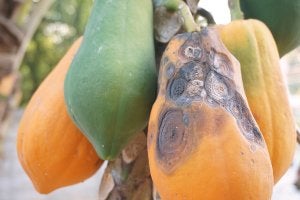
This disease can spread from one plant to another through things like wind, rain, contact, and gardening tools. If you suspect that your trees are infected with anthracnose, then consider contacting a plant technician right away for tree disease diagnosis and treatment. Taking steps now to control this fungal disease may help your trees recover and prevent the problem from spreading to other plants in your landscaping.
-
What is Crown Rot?
What is Crown Rot?
While it typically doesnât take much to keep a tree happy, itâs important to keep an eye on these plants both to ensure that they are healthy and to rule out any tree-related safety hazards. If youâre wondering if you may need tree disease treatment in Pleasanton because one or more trees on your property appear unhealthy, then read on to learn about one common tree disease called crown rot.
Recognizing Crown Rot
Crown rot is a fungal disease that tends to develop in areas with dense soils and wet conditions. While this problem typically affects garden plants, it can infect shrubs and trees as well. Crown rot can be tricky to confirm if you arenât experienced in tree disease diagnoses, as it can be similar in appearance to other problems. Also, it can be difficult to notice that there is anything wrong until it is too late, as the disease often produces few outward signs early on. Above ground, a tree that is infected with crown rot may appear drought-stressed, with leaf wilt spreading from one branch outward. At the crown, you might see dark spots in the bark caused by oozing sap or gum. When crown rot attacks the roots, the plant tends to die more slowly than if it attacks the base of the tree. Also, younger trees are more likely to die from crown rot due to their less established root systems.
Treating Crown Rot
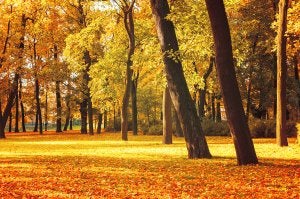
Unfortunately, the successful treatment of crown rot is not an easy task. For this reason, if you suspect that any of your propertyâs trees or plants may be infected with this fungal disease, then you should consider contacting a tree disease treatment company. By hiring an expert for this job, you are more likely to get an accurate diagnosis so you can decide what steps to take next, whether thatâs treating or removing the tree. Because crown rot can damage the roots of a tree and render it unstable, it may be safest to handle advanced cases of this disease with tree removal.
-
Dealing with the Effects of Dutch Elm Disease
Are you looking for pest control or tree disease treatment in Dublin because the trees on your property look less than healthy? If so, one potential problem to consider is Dutch elm disease, which affects many elm species.
If your trees are affected by Dutch elm disease, you will notice that leaves wilt, turn yellow, and then become brown. When the fungus enters through the root system, the symptoms may manifest lower in the crown and spread rapidly. When the infection starts in the upper crown, then the symptoms will start at the end of a branch and spread downward.
Although this fungus can spread through connected root systems, itâs closely linked with elm bark beetles. If these beetles lay their eggs in an infected tree, the young hatch and pick up the fungal spores. After reaching adulthood, the beetles can then visit healthy trees and infect them with Dutch elm disease.
Practicing insect control and pest treatment to limit the population of insects that can transmit the fungus is one of the best ways to deal this disease. Breaking root grafts between neighboring trees and treating trees with fungicides can also help manage the effects of Dutch elm disease.
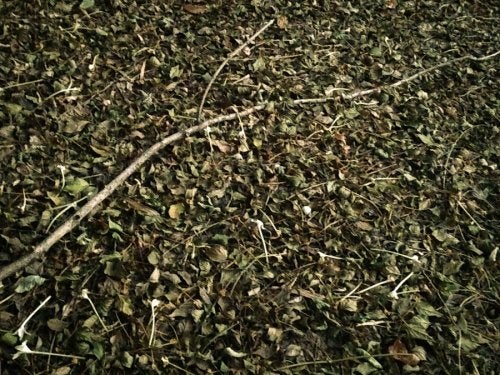
-
Spotlight on Earwigs
Due to their unusual appearance, earwigs are among the most feared insects that can invade a home. While earwigs may look scary, they are relatively harmless towards humans. However, if you are starting to notice lots of earwigs throughout your home and garden, you will want to set up residential pest control serving Pleasanton. A technician that specializes in insect pest control and eco friendly pest control can provide you with a safe and effective solution for your earwig problem. To help you plan your insect control procedure, here is a look at what you need to know about earwigs.
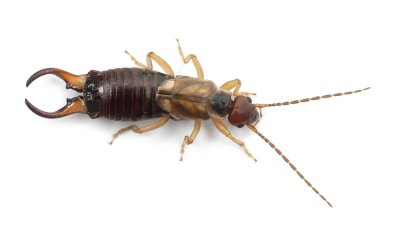
Appearance
Perhaps one of the most striking characteristics of the earwig is its appearance. These small, brown insects can be identified by the large pincers that rest on either side of their heads. Earwigs are typically between 5 and 25 mm in length, and most adults have a set of wings. When an earwig is frightened or on the defense, it will secrete an unpleasant odor that is designed to deter its predators.
Behaviors
Earwigs are nocturnal, so you will typically see these creatures during the nighttime hours. These secretive insects prefer to live and nest in dark, out of the way places, such as under logs or rocks. Since earwigs are attracted to bright lights, they may find their way to your home if you leave a porch light or other outdoor light illuminated at night. While you may see signs of earwigs in your home, they typically prefer to live outdoors.
Treatment
Your pest control professional can recommend several different treatment options for your earwig problem. One of the best strategies for eliminating earwigs is to remove any places where they may like to nest and hide. Along with cleaning up logs and debris in your yard, you may also want to make sure that your outdoor lights are not attracting earwigs indoors. A serious infestation may require other professional pest control strategies.
-
Treating Tree Diseases
There are many effective tree disease treatments in Dublin , and they should all be trusted to your professionals in lawn and pest treatment. By performing a proper tree disease diagnosis, the professionals can identify the cause of your treesâ decline and recommend various treatments, such as pest control or using a fungicide.
Your professional tree disease diagnosis may reveal one of several potential tree diseases. Anthracnose, crown rot, aspen canker, and Dutch elm disease are different fungal diseases that can damage and kill your trees if left untreated. The tree disease treatment may call for a type of fungicide to kill the fungal disease. The treatment that professionals may conduct involves tree spraying or injecting the fungicide directly into the tree or surrounding soil.
A professional in tree disease may suggest you change your tree care. This may include different pruning practices, along with watering changes that can help control the tree disease or intruding pests. Certain pests can infest and damage trees, causing them to develop diseases. These pests should be controlled through professional pest control in addition to professional tree disease treatments.
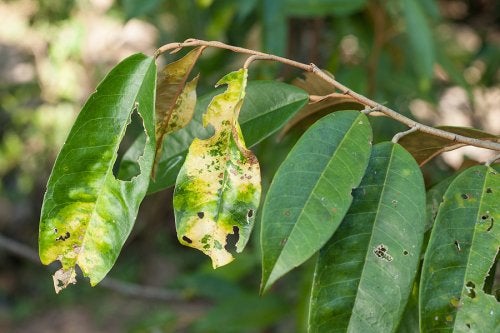
-
Spotting Problems with Magnolia Trees
If your magnolia tree has been looking a little down, then you may need a tree disease diagnosis in Pleasanton. It is best to identify and correct potential diseases or pest infestations before they get out of hand. By correcting these problems early on, a professional can conduct pest treatment and tree disease treatments that will help save your magnolia tree.
As seen in this video, there are three potential diseases that can affect magnolia trees. Verticillium wilt is a type of fungus that will wilt branches and discolor leaves until the tree dies. Magnolia leaf blight can be spotted by the black or brown spots on leaves, cankers on the tree, and blackened twigs. Fungus can also damage your leaves and the tree. Tree disease diagnoses might include one of the previous illnesses or a pest infestation. You may need professional pest control to save your tree.
-
How to Take Care of Your Lawn
Lush, healthy lawns can add a lot to the appearance of your business. If your commercial property features plenty of grassy areas, then you can probably benefit from commercial pest control and tractor mowing services in Dublin. These features can each provide a vital service in helping you care for your lawn.
Successful lawn care relies on a few major factors. First, itâs essential that your grass receives enough water and nutrients for it to continue growing and maintain its natural resistance to pests and disease. Second, regularly trimming your lawn to the ideal height for your grass type and the season will help keep your lawn healthy and can prevent mold growth.
A problem that can drastically affect the quality and appearance of your lawn is a bug infestation. There are a variety of insects, such as grasshoppers, beetles, and grubs, which can feed on and damage your grass, leaving it unattractive and possibly in a weakened state. If you suspect that your lawn has a bug problem, contact a lawn spraying company for pest treatment right away.
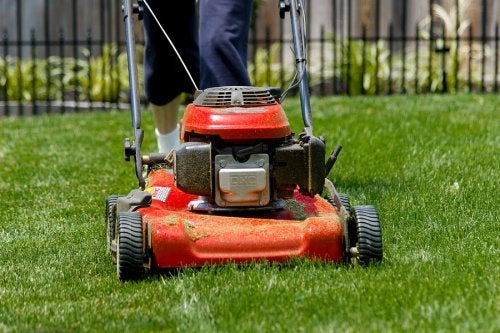
-
Diseases that Commonly Affect California Citrus Trees
Trees that are in poor health can look unattractive, but they can also spread illness to other plants on your property. The first step for successful tree disease treatment in Pleasanton is tree disease diagnosis. A few common conditions seen on California citrus trees include citrus nematode, sooty mold, and anthracnose.
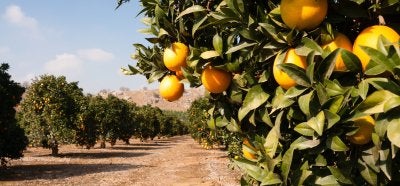
Citrus Nematode
This disease is caused by tiny, unsegmented roundworms called plant-parasitic nematodes. These parasites live in the soil around the plant and in the plant itself, feeding off of its roots. Aboveground symptoms of a citrus nematode problem include a decline in growth, twig dieback, small fruit size, and reduced yield. Underground, you will likely find poor growth on the treeâs feeder roots, and a dirty appearance to the roots as the soil will often stick to them. Once established in a grove, the nematodes canât be eradicated, so the best form of pest control is to manage them using nematicides.
Sooty Mold
This common condition doesnât infect the plant itself, but grows on its surfaces and can indirectly damage the tree. Sooty mold is a name used for several species of fungi that can grow on trees and create what looks like a layer of soot that blocks sunlight. When honeydew, a sticky, liquid excretion left behind by insects that eat the treeâs sap, is left on the plants, sooty mold can develop. Most trees can handle a small insect population and the sooty mold they encourage, but plant disease treatment may be necessary if the honeydew attracts additional insects, such as ants, or if the tree begins to fail. Common treatments for sooty mold include pest control, insecticidal soaps, and horticultural oils.
Anthracnose
Anthracnose is one of the most common tree diseases seen in California, and it can affect citrus trees in addition to other deciduous and evergreen varieties. This condition causes dark, sunken lesions to form on a treeâs stems, leaves, flowers, and fruits. Anthracnose is a fungal disease that usually wonât cause permanent damage to a tree and can be managed by improving air flow through the plantâs branches and fungicide applications.
-
Identifying Tree Diseases
Do you need help with tree disease diagnosis near Pleasanton ? Plants can suffer from a variety of diseases; unfortunately, these diseases can cause your plants to look sickly. In addition, plant diseases can spread throughout your yard. Some plants suffer from fungal diseases that can be treated with fungicides. Other plant diseases are caused by plant infestations and are treated using pest control methods.
Watch this video to see a tree disease diagnosis in action. The tree is diagnosed with slime flux, also known as bacterial wetwood. Unfortunately, slim flux cannot be treated with a tree disease treatment such as fungicides or pest control. Thus, the professional advises good water and fertilizer management to less the infectionâs impact on the tree.
RECENT POSTS
categories
- Uncategorized
- Weed Control
- Lawn Treatment
- Pest Control
- Performance Pest Management
- infographic
- Spider treatment
- Pest Management
- Commercial Pest Exterminator
- Residential Pest Exterminator
- Mice
- Tree Diseases
- tree disease treatment
- cockroaches
- Flea
- Fleas
- Ants
- Ant Infestation
- Bed Bugs
- Wasps
- Bees
- Stinging Insects
- Household Spiders
- Insects
- Tractor Mowing
- Earwigs
- Northern California
- Commercial Property
- Sow bugs
- Infestation
- Bugs Live
- DIY Pest Control
- Spider Silk
